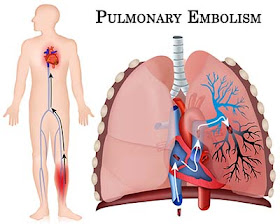Warfarin is started 24 to 48 hours after heparin therapy has been initiated. During the first 3 days of warfarin therapy, the prothrombin time or INR is increased before the onset of true anticoagulation. Therefore, before discontinuing the heparin, the prothrombin time or INR should be therapeutic (1.5 to 2 times normal) for approximately 2 to 3 days.
Low-molecular-weight heparins are indicated for prophylaxis in postoperative patients and probably have a role in the management of acute pulmonary embolism and deep venous thrombosis because they do not require monitoring of the anticoagulation effects.
Continuing the Treatment:
Long-term anticoagulation is usually achieved with warfarin, although low-molecular-weight heparins can also be used. Patients with reversible risk factors that are subsequently eliminated should undergo anticoagulation for a total of 3 months. If this is an initial episode of embolism and the patient has no clear risk factors, treatment should probably be maintained for 3 to 6 months. Finally, those patients with recurrent emboli and nonreversible risk factors (e.g., adenocarcinoma, antiphospholipid syndrome, or factor V Leiden deficiency) should be treated for life. When it is uncertain how long to maintain therapy, impedance plethysmography can help in identifying recurrent deep vein thrombosis.
Role of Thrombolytic Therapy:
The role of thrombolytic agents (streptokinase, urokinase, and tissue plasminogen activator) is yet to be elucidated in the management of acute pulmonary embolism. There appear to be no significant differences between the three agents in the treatment of pulmonary emboli, except for their respective costs. Thrombolytic agents do accelerate the resolution of the pulmonary artery clot, but they have not been clearly shown to improve survival as compared with the results observed for conventional heparin therapy. The only adopted use of these agents is for patients with massive embolism and systemic hypotension. When used, thrombolytic therapy must be followed by a standard course of heparin.
Use of Vena Cava Filter:
The purpose of vena caval filters is both to trap emboli and maintain the patency of the inferior vena cava. These filters are largely viewed as an alternative therapy for thromboembolism when anticoagulation is unacceptable. The three most common indications for filter placement are
(a) a contraindication to anticoagulation,
(b) failure of proper anticoagulation to prevent the formation of further emboli, and
(c) a complication of anticoagulation therapy.

No comments:
Post a Comment